
SAVANNA LAB
The whole world is a savanna; forests and grasslands are just special cases

The whole world is a savanna; forests and grasslands are just special cases
November 11 2021
Frontiers in Environmental Sciences has just published a new article for COP26. In this article, Niall Hanan and other colleagues reviewed the current literature and found there is a globally significant amount of carbon stored in drylands. Future management of dryland carbon will need to consider local ecological contexts that can enhance carbon in vegetation and in soil organic and inorganic carbon, while ensuring ecological integrity of dryland systems and provision of critical services to dryland populations.
August 06 2021
Frontiers in Environmental Sciences have launched a new specialty section “Drylands” with Niall Hanan, and several Savanna Lab members and colleagues from around the world serving on the Editorial Board. The Drylands section brings together interdisciplinary research focused on global drylands, including tropical and temperate, high latitude and high elevation deserts, savannas, grasslands and related arid, semi-arid and drought-seasonal environments.
August 06 2021
Use MachineLearning and find it challenging to derive the underlying functional relationships from the "black boxes"? Check out our new research led by Qiuyan Yu in Methods in Ecology and Evoloution "Study becomes insight: Ecological learning from machine learning" (article link).
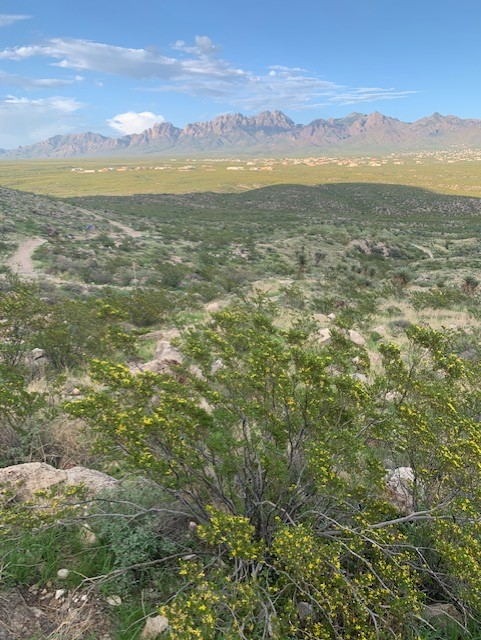
August 02 2021
New SavannaLab graduate student Trevor Roberts has been awarded a 2021-22 graduate research fellowship from the New Mexico Space Grant Consortium (NMSGC; http://nmspacegrant.com/) for his master's research entitled “Using NASA's GEDI and ICESat2 Lidar instruments to study water limitation and competition in US southwestern shrublands”. Trevor came to Las Cruces this summer from Columbus, Ohio, where he completed his undergraduate degree at Ohio State University. He has already made progress on an initial analysis of the patterns and controls on shrub density, cover and volume across the Jornada Basin LTER site using airborne lidar data. Welcome Trevor!
August 01 2021
Savanna Lab has participated in a global study in developing protocols of using unoccupied aerial vehicle (UAV) for estimating plant above-ground biomass. The findings of this study has recently been published in Remote Sensing in Ecology and Conservation (article link). This is also Robert's first publisehd paper - Congratulations Robert!

May 06 2021
Hot off the press: Check out Savanna Lab's new paper in Nature Climate Change led by lab alumini Wade Ross examining socioenvironmental drivers of woody biomass in Africa (article link).
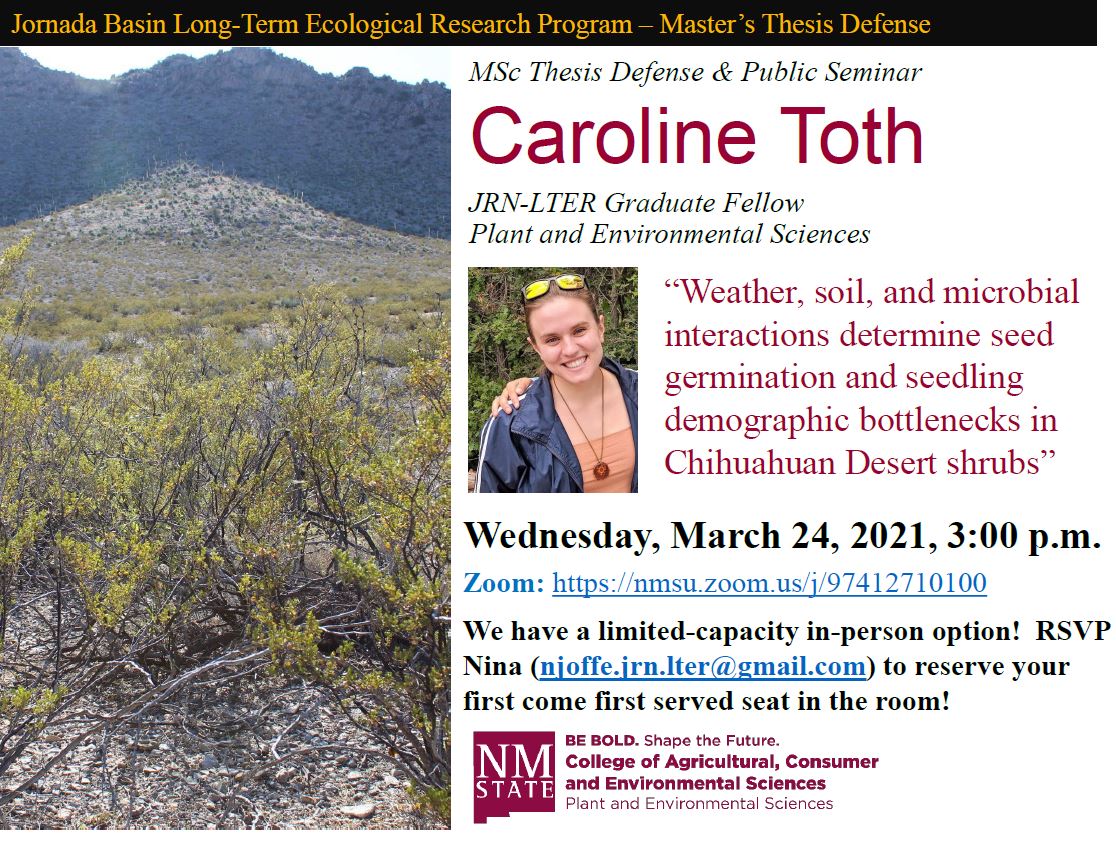
March 24 2021
Savanna Lab member Caroline Toth will defend her master’s research this afternoon, March 24 at 3 pm. Caroline is a graduate student in Plant and Environmental Sciences (PES) and a Jornada Basin LTER Graduate Research Fellow. Good luck Caroline!
Title: “Weather, soil, and microbial interactions determine seed germination and seedling demographic bottlenecks in Chihuahuan Desert shrubs”
Date and Time: Wednesday March 24 @ 3 pm
Where: https://nmsu.zoom.us/j/97412710100
December 16 2020
Savanna Lab's Nature News and Views article, Satellites could soon map every tree on Earth, was listed among the “10 remarkable discoveries from 2020” by Nature.
December 16 2020
Savanna Lab's proposal to work with GEDI data is funded by NASA GEDI program. Our proposal entitled "Patterns and drivers of tree height and biomass in water limited ecosystems" will be funded for 3-years to examine global patterns in tree height and biomass and assess how these patterns are related to climate, phylogeny, soils and disturbance.
December 13 2020
Papers from the Special Research Topic "Use of Earth Observations for Actionable Decision Making in the Developing World" in Frontiers in Environmental Sciences now avaialble online (link). Articles in this Special Topic introduce a range of EO-based approaches for monitoring natural resources, risk, and disaster analysis and prediction in SERVIR regions of Africa, Himalaya-Hindu Kush, and Southeast Asia. You can also read the Editorial Introduction of this Special Topic by Niall Hanan, Ashutosh Limaye, and Daniel Irwin here.
October 15 2020
Niall Hanan and Julius Anchang published a News and Views article ( https://www.nature.com/articles/d41586-020-02830-3) this week in the journal Nature. The commentary builds on a new paper by Martin Brandt, Compton J Tucker and colleagues ( https://www.nature.com/articles/s41586-020-2824-5) who map ~1.8 billion individual trees in high resolution satellite data for the western Sahel. Our growing ability to map the size and location of individual tree canopies over large areas will be transformative for the terrestrial earth observation community. The News and Views argues that, with more efficient deep learning for canopy classification, we will soon be able to map all trees globally.
August 20 2020
Robert Wojcikiewicz received a one-year AES graduate research award to support his work related to analysis of high resolution landscape imagery. The AES graduate research awards further the mission of ACES and the AES by expanding research that benefits the citizens of New Mexico. Brianna Lind also recieved the Salopek Congratulations Foundation Endowed Scholarship and the Arden & Elsie Baltensperger Scholarship for her graduate study at the Plant and Environmental Sicences Department.
Congratulations to Robert and Brianna!
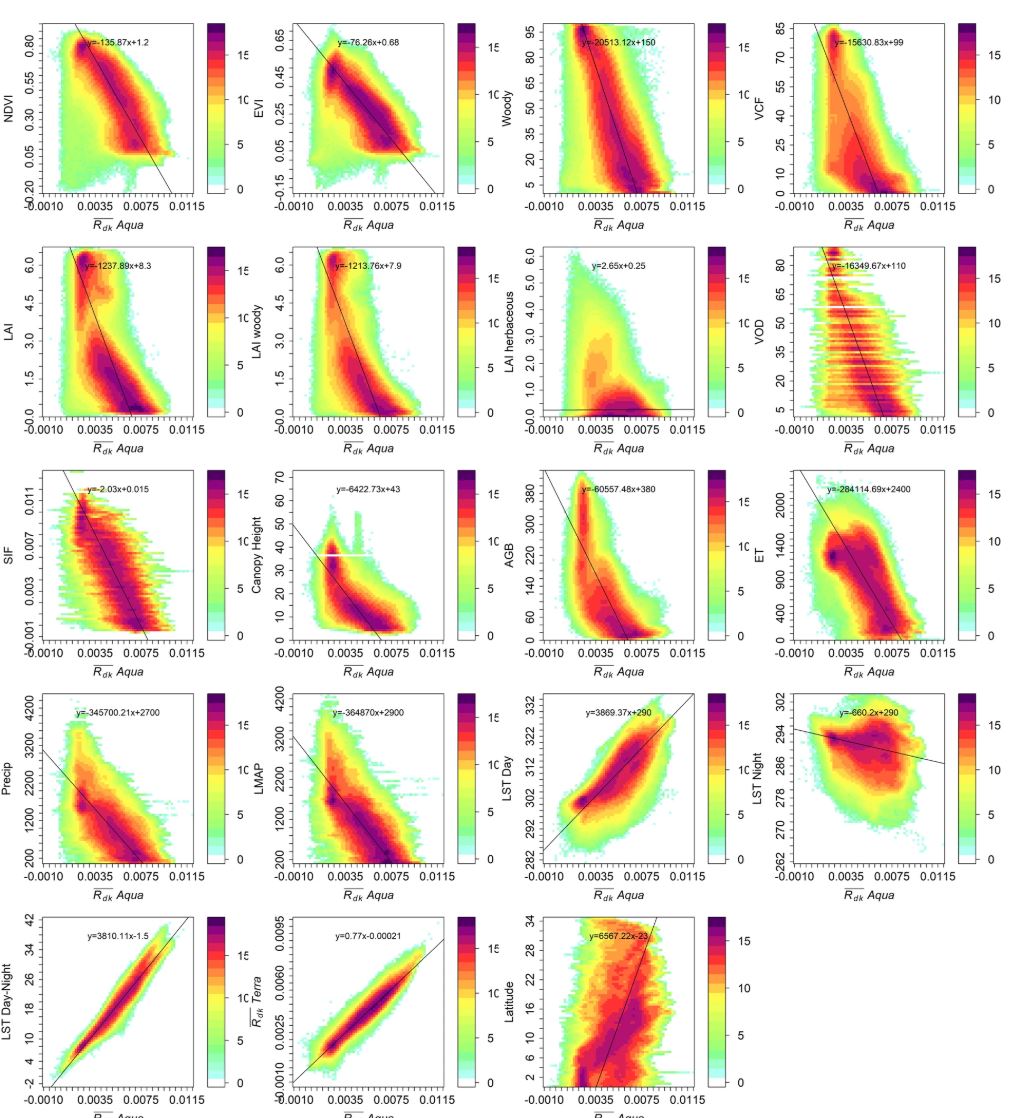
June 17 2020
Congratulations to Savanna Lab alumini Sanath Sathyachandran for his new paper titled "Remotely sensed thermal decay rate: an index for vegetation monitoring" published in Scientific Reports. In his new paper, Sanath found that the termal decay rate, defined as the variations in the diurnal temperature, is a useful indicator of both vegetation structure and function. Article link: 10.5061/dryad.v5s0j.
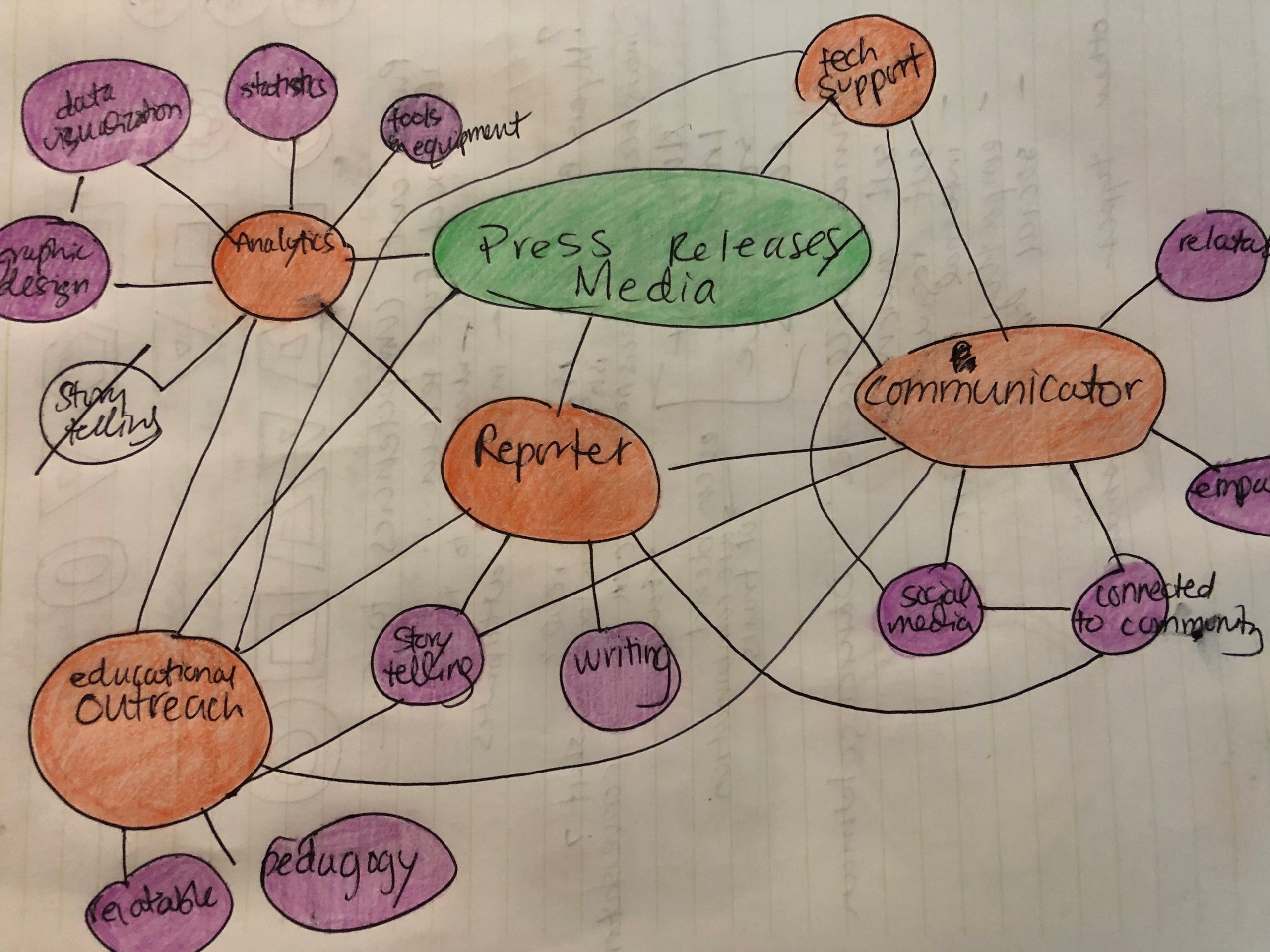
May 18 2020
Brianna Lind attended the American Institute of Biological Sciences' Enabling Interdisciplinary and Team Science over zoom in late April. Through the workshop, Brianna has increased her awareness of specific attributes of successful teams, including examples of effective leadership styles, ways to develop shared visions, and ways to improve communication and trust among team members. The picture on the left shows a mind-mapping she used to develop realistic expectations around a certain task as a group.

May 04 2020
Congratulations to Kaboro Samasse for his new paper mapping rainfed and irrigated cropland at 30 meter scale across five West African Sahel countries. His analysis uses training data, the Landsat satellite archive, Google Earth Engine (GEE) and locally-optimized random forest models. The paper titled "A High-Resolution Cropland Map for the West African Sahel Based on High-Density Training Data, Google Earth Engine, and Locally Optimized Machine Learning" is published in Remote Sensing. Article link: 10.3390/rs12091436. A visulaization of the new cropland dataset on GEE.

April 22 2020
Successful result for Savanna Lab proposal to work with ICESat-2. Our proposal entitled " Improving estimates of vegetation structure and biomass in global savannas and drylands with ICESat-2" will be funded for 3-years to "boldly go where no ICESat studies have gone before".
April 22 2020
Caroline's project entitled " Demographic bottlenecks as drivers of dominant shrub distributions in the Jornada Basin" will support her study of seed and seedling dynamics in some of the dominant shrubs of the Northern Chihuahuan Desert. Robert's project entitled " Remote sensing of biotic and abiotic factors contributing to shrub encroachment in dryland ecosystems" is looking at the dual roles of spatial connectivity and density dependence as feedback mechanisms underlying shrub encroachment.
April 22 2020
Taylor applied for a 2020 NEON-ESA Early Career Scholars Program to learn about NEON data and analysis during this year's ESA Annual Meeting in Salt Lake City, UT.
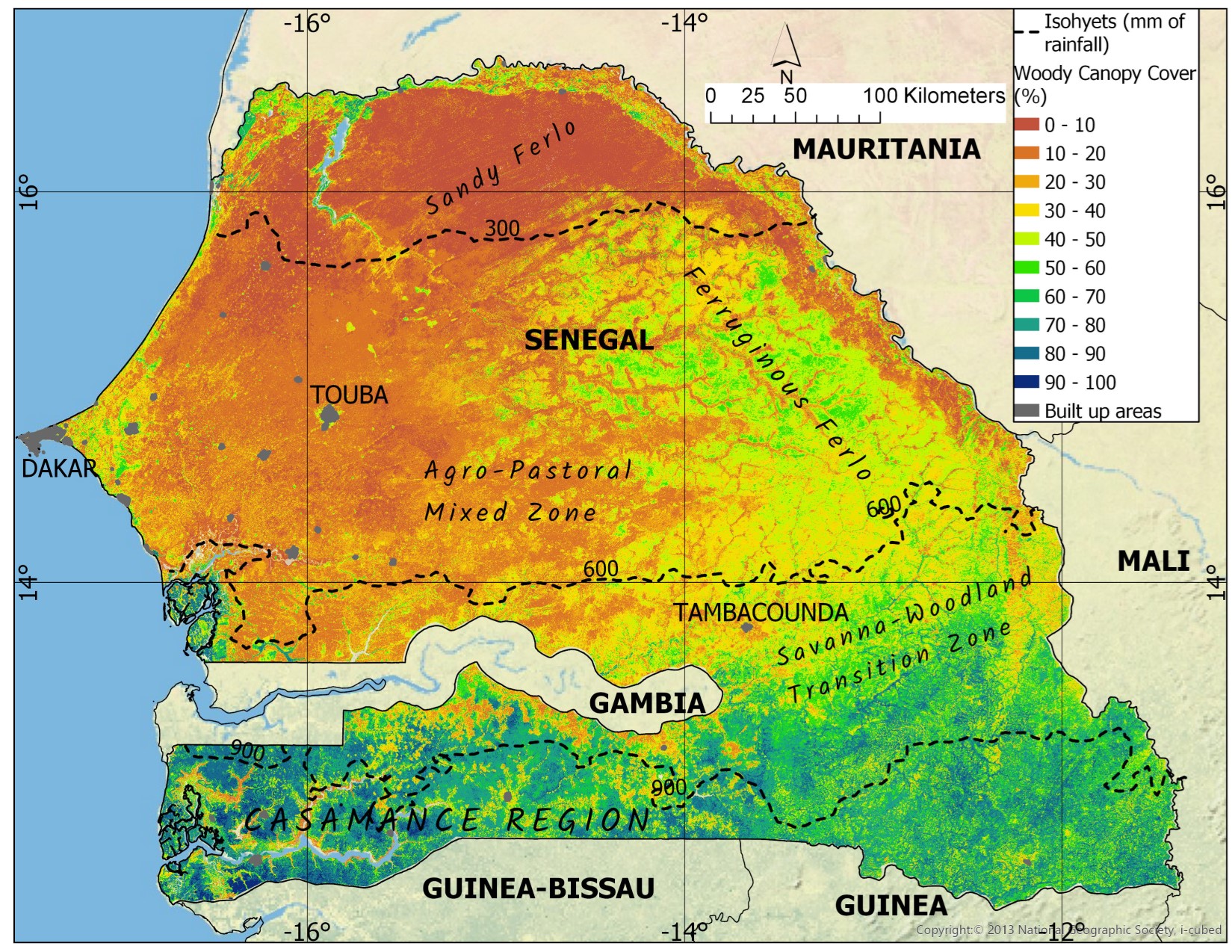
January 10 2020
Using both optical (Sentinel-2) and radar backscatter (Sentinel-1) data, Julius Anchang mapped woody canopy cover in West Africa savannas at a very high spatial resolution. The mapping application can also be replicated and rescaled via the Google Earth Engine platform. The paper titled "Towards Operational Mapping of Woody Canopy Cover in Tropical Savannas using Google Earth Engine" is published in Frontiers in Environmental Science. Article link: 10.3389/fenvs.2020.00004.
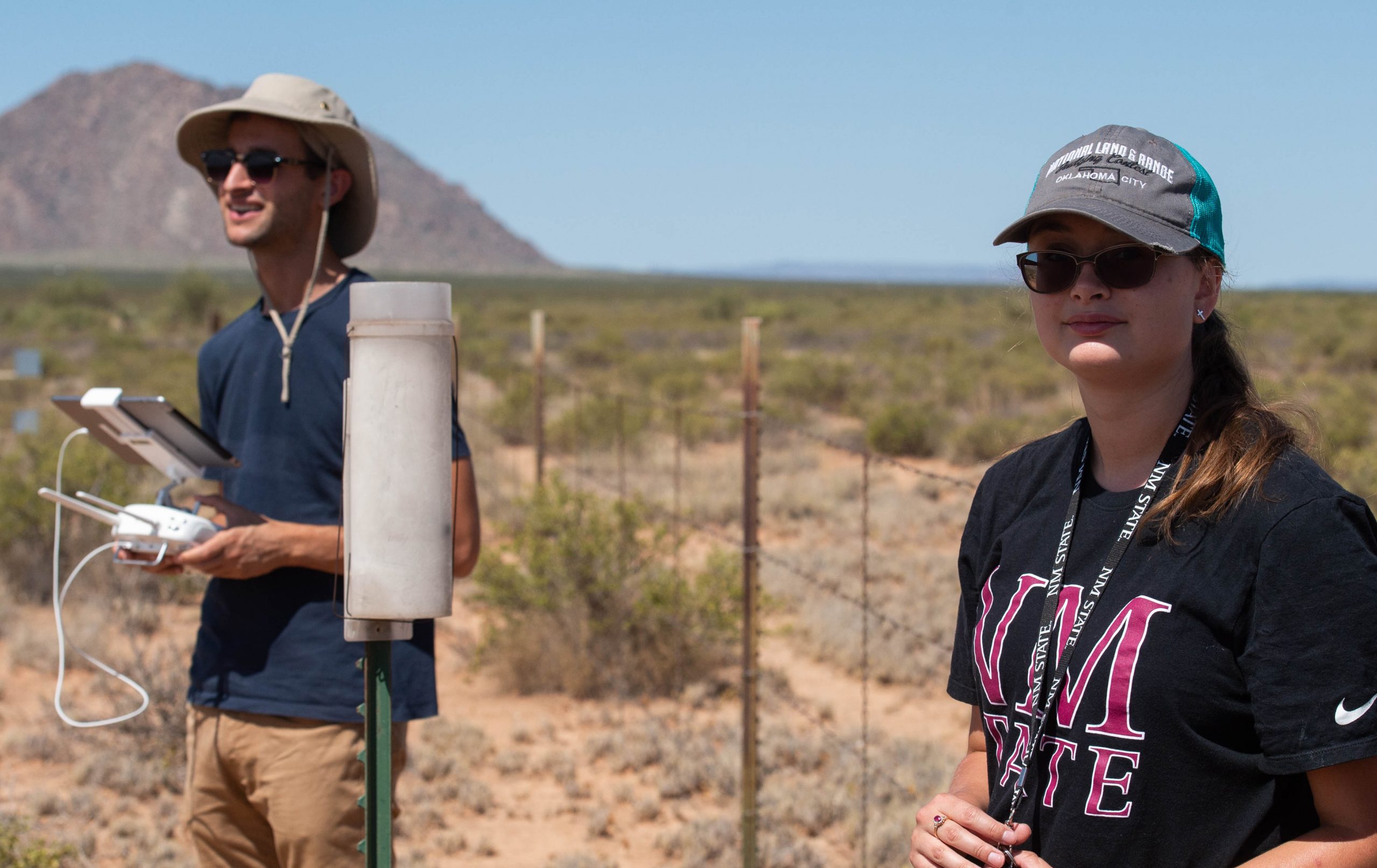
November 05 2019
Using Unmanned Aerial System (UAS),the Savanna Lab is studying the vegetation population at the Jornada Basin Long-Term Ecological Research (LTER) site. Read more about the story: NMSU researchers drive agriculture into the future with big data.
September 05 2019
Congratulations to Savanna Lab alumni Njoki Kahiu - her paper Fire in sub-Saharan Africa: The fuel, cure and connectivity hypothesis was in the top 20 most read articles in JGR-Biogeosciences in the Jan 2017 through December 2018 2 year period!